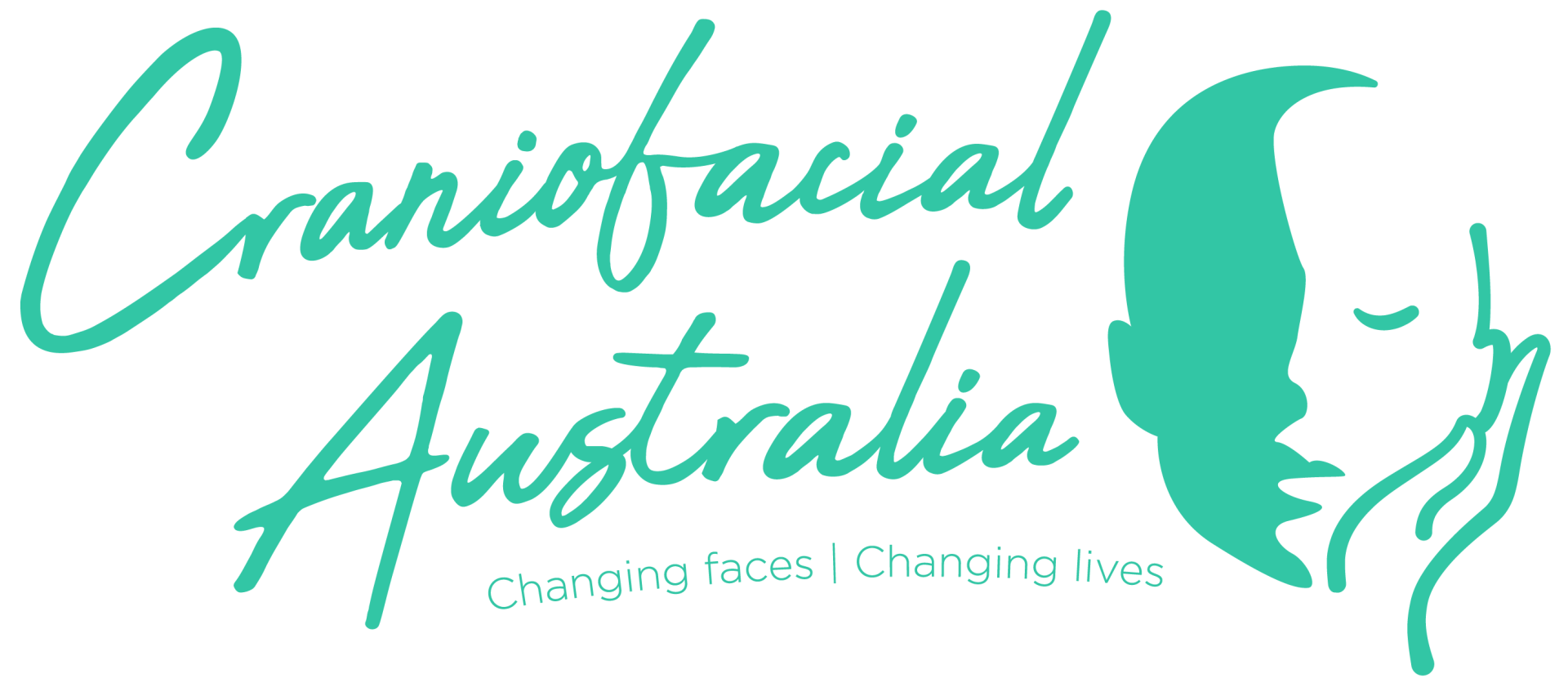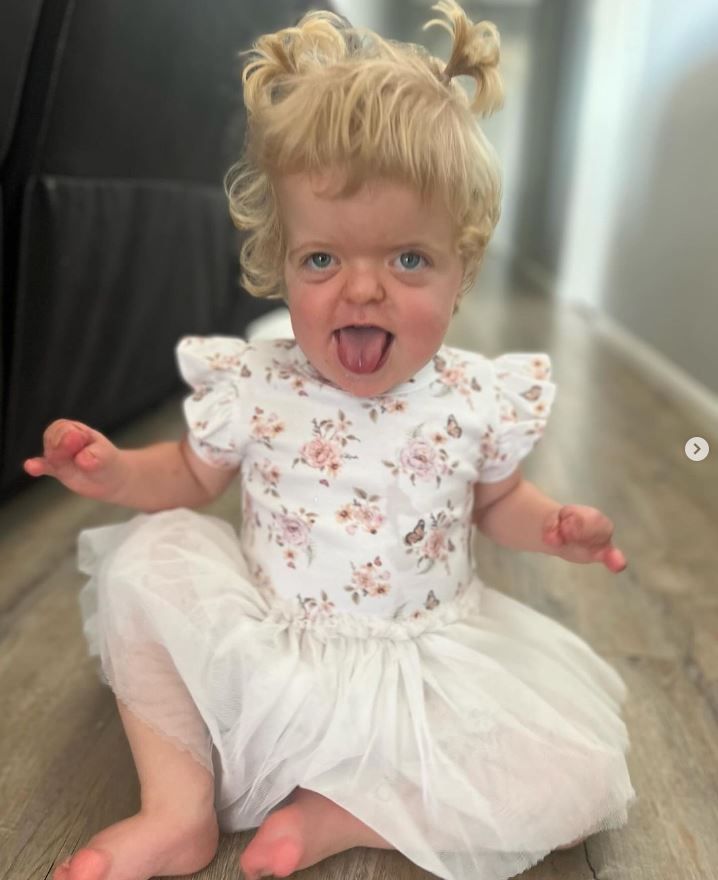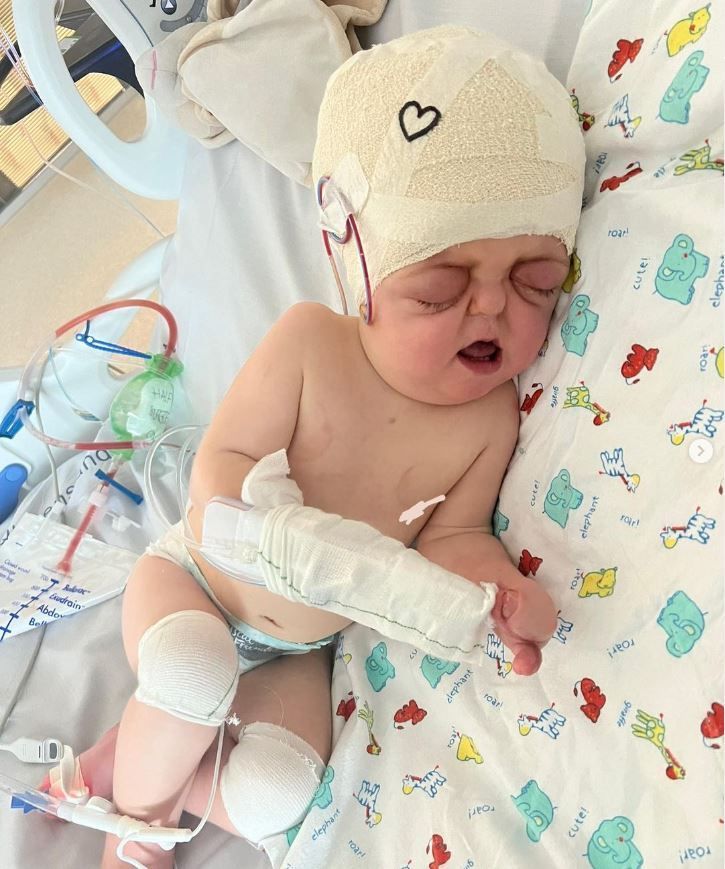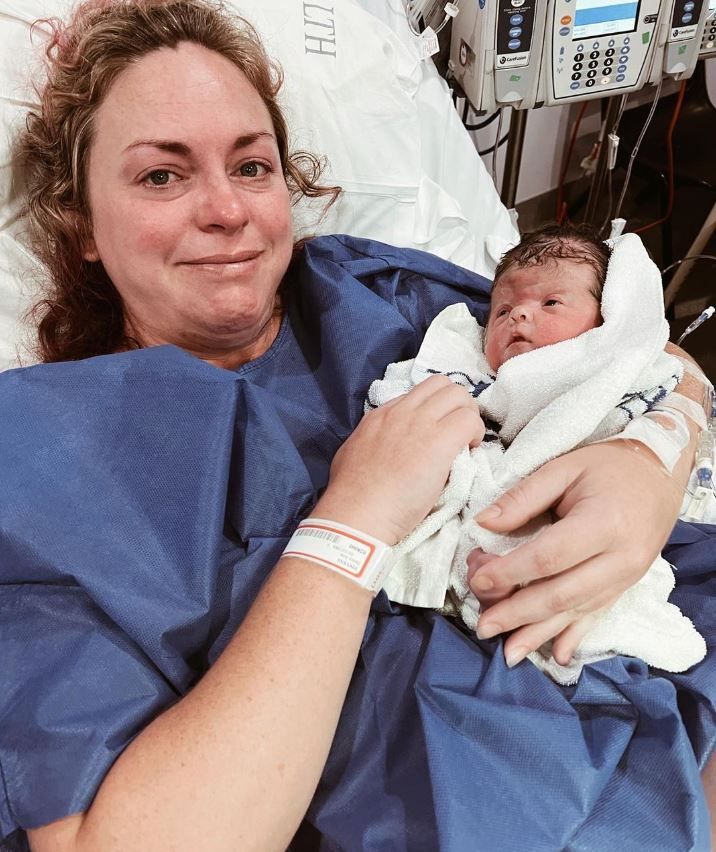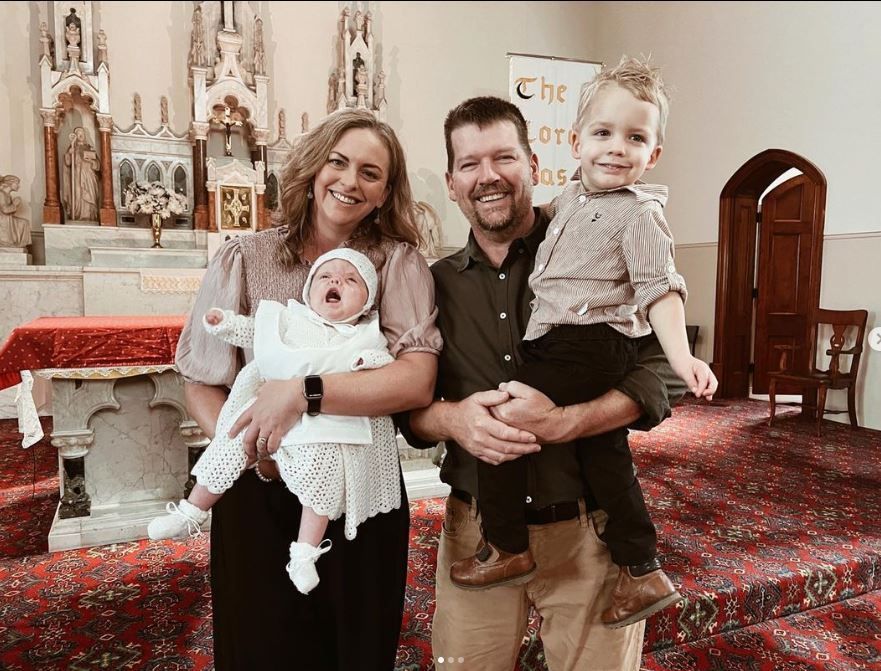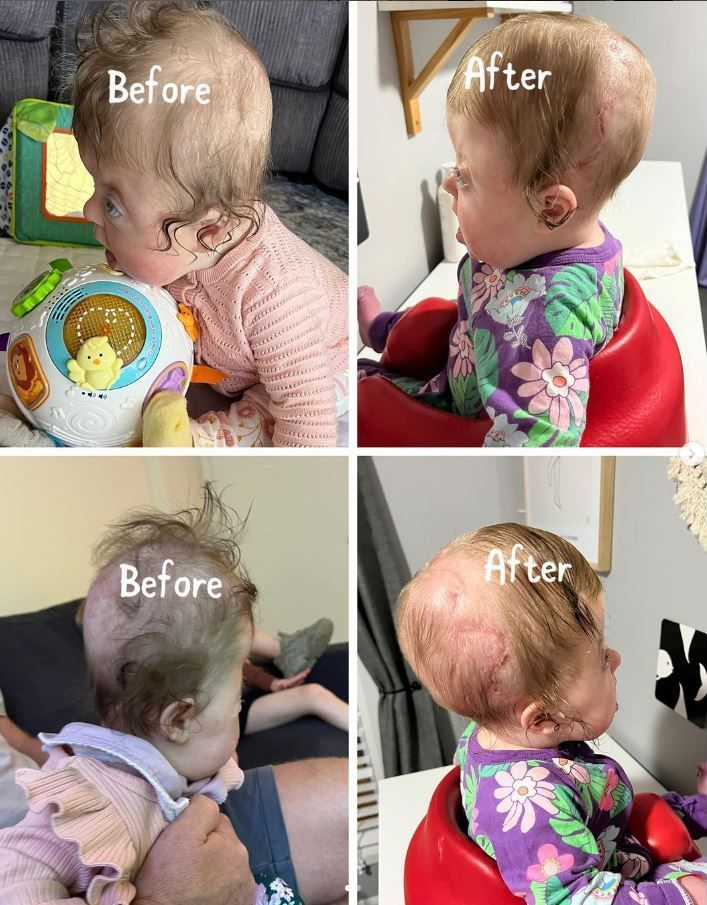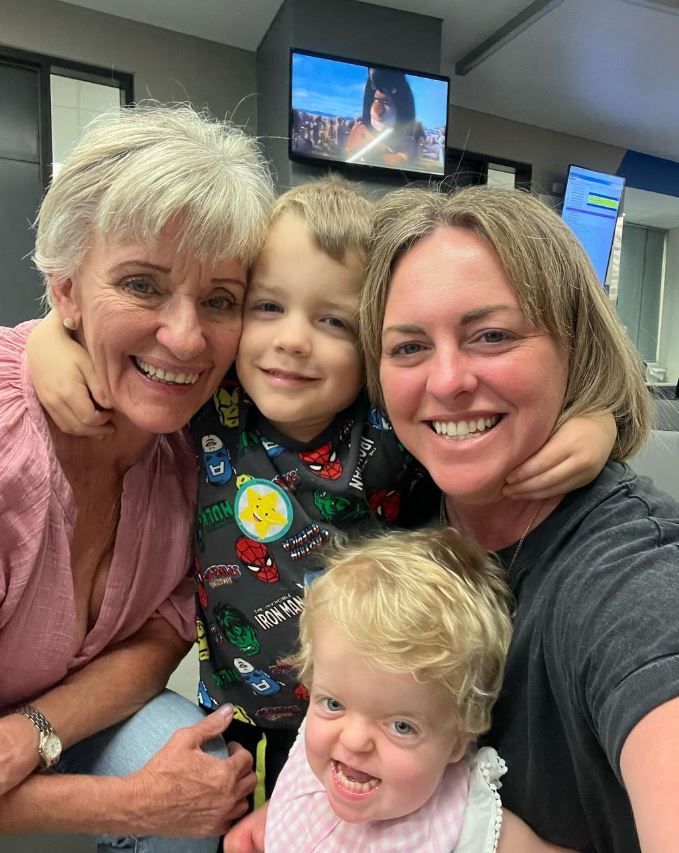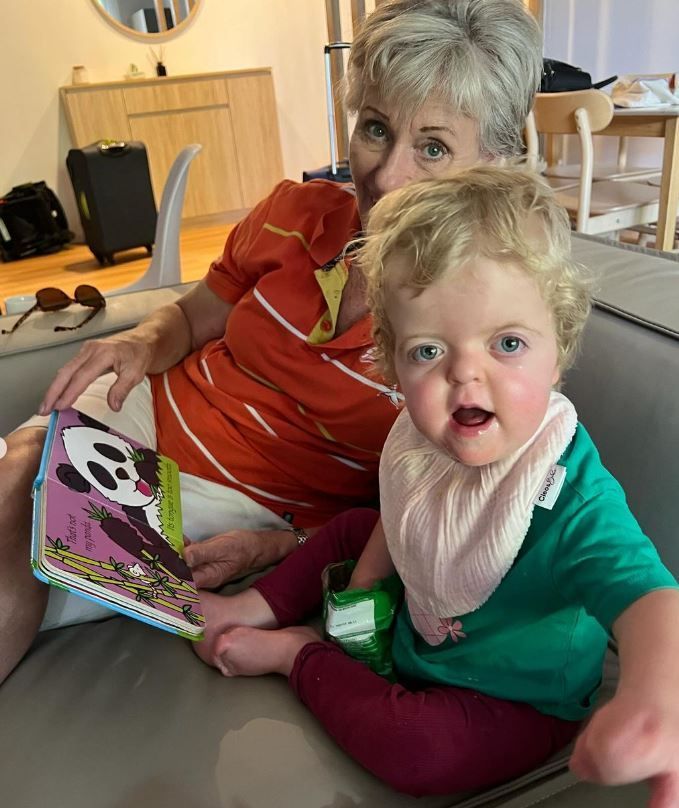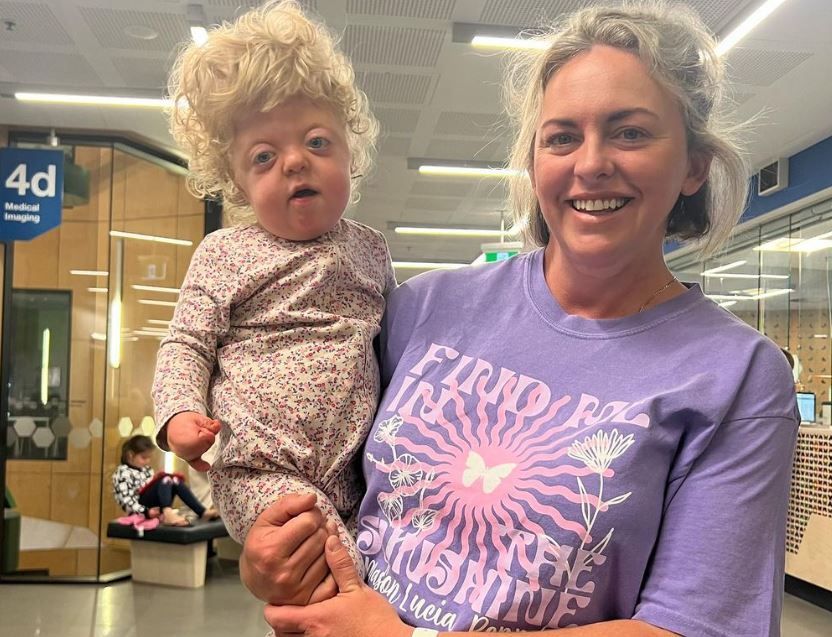Daisy's Story
We are incredibly blessed to have our own beautiful Cranio-Warrior, Daisy. Daisy is 2.5 years old and was born with a rare genetic syndrome; Apert Syndrome. Apert’s is caused by a mutation of the FGFR2 gene and because neither my husband or I have Apert's, it’s a random mutation. The chances of having a rare gem like Daisy is 1 in 65000.
We found out during pregnancy that our baby was different due to the initial morphology scan not showing fingers or toes. After we were referred to the Mater for expert scanning, they also found the craniosynostosis. It’s rare to find craniosynostosis prenatally so the doctors were very interested in how it presented on the scans. She wasn’t oficalliy diagnosed until after she was born but we were pretty confident that she would be born with this syndrome. We didn’t have much time to process it when my membranes ruptured at 28wks. And then at 35 weeks, Daisy was born naturally, and very quickly, at our local hospital in Warwick. We were flown straight to the Mater by the Royal Flying Doctor Service and spent the next 4 weeks in the Mater NCCU while Daisy received the best care from a range of teams to assist her with breathing and feeding.
Apert Syndrome affects the bones in your body and the usual traits include craniosynostosis, fusion of the fingers and toes (syndactaly), mid-face hypoplasia, cleft palate, fusion of the shoulder and arm bones and a protruding tailbone.
Daisy has most of these characteristics and her bony fusions are some of the most severe forms. Her craniosynostosis was bi-coronal, metopic and bi-squamosal. Her mid-face hypoplasia means her airways are tiny and her ears are lower set causing hearing loss and drainiage issues. She also has a soft palate cleft which makes feeding & speech tricky. Her syndactaly is the most severe her surgeon has seen and she was born with Type 3 or ‘Rosebud’ hands which means all of her fingers were fused together under the skin. This severity makes it very difficult for the surgeons to try and release and construct fingers. Her toes are fully fused together and point up vertically and she has a large bony mass on the ball of her foot. Whilst we thought all of these things would make life a huge challenge for Daisy she is proving us wrong and is an amazing little walking, talking 2.5 year old girl!
She is now 15 surgeries in which has definitely taken its toll on us but you wouldn’t know it to see her today. Some of these surgeries have included nasal stents to open her airways, posterior vault of the skull, frontal-orbital advancement of the skull, cleft palate repair, thumb and pinkie releases, adenoid & tonsil removal, cauterising turbinates and a few sets of grommets. We like to think she is on the home stretch with only a few more finger releases and her final big one; a mid face advancement. We have been blessed to have her come through all of these surgeries safely and other than a few post op complications, she has had a pretty smooth run compared to some of our fellow Apert friends. It really is true when people say there’s always someone facing something harder than you and as I reflect on the last 2.5 years, whilst it has been hard and exhausting, there is just so much joy that she brings to this world that she was truly meant to be here. I would take away the parts of her syndrome that cause her pain and discomfort in a heartbeat, but I would never change the amazing girl we are so blessed to have and the resilience and creativity she has already found in life is forever inspiring.
Right now, the biggest challenge with Daisy’s syndrome is the surgeries and recoveries. Fasting is so hard when this little girl loves her food! She is still at an age that she can’t understand why she can’t eat. The hospital visits don’t get any easier and she has a lot of trauma from the constant procedures but we live in hope that most of this will be over soon and she’ll be able to live a full, fun and vibrant life like any regular kid.
When Daisy was about 1 I was recommended a book to read; Special by Melanie Dimmet, and if I could give any family raising a child with a disability a nugget of gold, it would be to read this book! It outlines how those first few months and years feel, and helps to validate all of the thoughts and feelings you go through. But what can’t be read in a book, or listened to on a podcast is the simple moments in the everyday. That is what I cherish most. Watching her use a spoon for the first time, say a new word, light up with joy when her dad gets home from work, run to the door when Nanny walks in, tackle her brothers to the ground for tickles and more. These are the sweet spots!
Unfortunately the one thing that worries me the most for Daisy’s future is inclusion and how far away we are as a country from that. I heard someone say this recently and I wish I could remember who but 'when someone with a wheelchair can roll up to every building and be able to access it, that is the day we actually start to make a dent in inclusion'. I want Daisy to be able to go to a regular school, to have the supports she needs to thrive in an environment that every other child without a disability experiences, to be able to go to the park without being stared at and actually be able to use the equipment, to go up to a child and play with them without then running away scared because she looks different (all of these things we have already experienced in one way or another and she’s only 2.5). Education is part one, but making the changes is the big part two. Every family can play a small part in this by advocating for everyone to be included - disability or not. If there’s a new park being built in your neighbourhood, can it be played on by anyone? A new business approved, is it accessible? A library being refreshed, does the book of the week include someone with a disability? And if these are no’s, speak up. Give the feedback, expect more, be the advocate. Because I can tell you, it’s exhausting for the parents of children with disabilities to be the ones trying to make these changes, to educate people in the community, all whilst trying to help their babies get through the challenges they face each and every day. And I’m only a parent, I can’t begin to imagine how hard it must be for the 4.4 million people in Australia who live with a disability every day.
Musings from Daisy’s Mum - Debb Stevens
You can follow along Daisy’s journey at Daisy Blooms - Apert Syndrome Awareness Advocate on Facebook
and at daisy_blooms22 on Instagram.
"Daisy is an absolute joy, and whilst she’s had it harder than any little girl should ever have to go through, she is smashing her milestones! Whilst life looks different for her, she’s found her way around so many regular day-to-day activities and does it all with a smile. She is magic and is here to make big waves and change the perception of disability for everyone she meets!"
Debb - Daisy's Mum
THANK YOU TO DAISY AND HER FAMILY FOR BEING A VOICE OF HOPE AND STRENGTH FOR THE CRANIOFACIAL COMMUNITY
